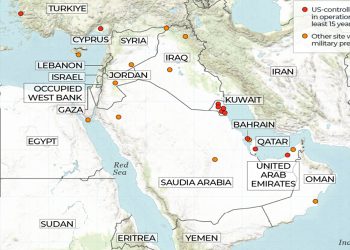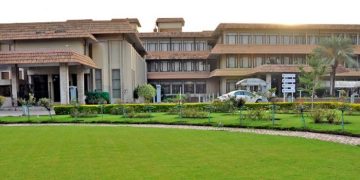Nafisa Al-Tahira bint Al-Hassan was the great great-granddaughter of Hazrat Ali (AS) and thus, a descendant of the Holy Prophet Muhammad (SAW). Also, she was an acknowledged scholar and teacher of Islam, having taught Imam Muhammad ibn Idris ash-Shafi, and was the best-known female scholar of hadith in Egypt.
Nafisa was born in Makkah on 11th Rabi-ul-Awal, 762 CE, to Al-Hassan al-Anwar the son of Zayd al-Ablaj, son of Hazrat Imam Hassan (AS) the grandson of our Nabi (SAW). Her father was appointed as the governor of Al-Madina in 767 CE when she was just five years old. She accompanied her father to Madinah, memorized the entire Quran, and studied both hadith and Islamic jurisprudence thoroughly. Before she even reached puberty, the community gave her the nickname Nafisatul-ilm or the ‘gem of knowledge’.
She was 16 years old when she married her cousin, Ishaq al-Mu’tamin, son of Ja’far al-Sadiq (AS), and would later shift to Egypt with her family. Nafisa lived a frugal life as she would spend her days fasting and her nights praying. Historians report her niece Zainab saying, “I served my aunt Nafisa for forty years. I never saw her sleeping at night and I never saw her eating during the day, except the days forbidden to fast — the two Eids and the Days of Tashriq (11th — 13th of Dhul Hijjah).” Also, Nafisa spent her wealth on caring for the sick.
Due to her reputation as a devout and knowledgeable person, students came from distant places, and among them was Imam al-Shafi, the man behind the Shafi school of Sunni fiqh. Nafisa financially sponsored his education.
The classical scholar Ibn Kathir in al-Bidayah wa al-nihayah describes her as follows: “She was a wealthy lady, did a lot of favors to the people, especially those paralyzed, those with severe illness, and to all other ill people. She was devout, ascetic, and of abundant virtue. When Imam al-Shafi arrived in Egypt, she did good to him, and sometimes Shafii led her in prayers in Ramadan.”
Imam al-Shafi would visit Nafisa to hear hadiths and tafsir of the Holy Quran from her. He was a frequent guest in her house, a listener of her lectures in her mosque, and as reported by the historians, he asked for her Dua and sought her blessings.
When Imam al-Shafi felt sick and later felt the approaching death, he immediately wrote his will requesting Nafisa to read the funeral prayer. After his death, his body was carried to Nafisa’s home and she prayed over it.
Besides Imam al-Shafi, many other scholars and great jurists sought knowledge from Nafisa. Among them were al-Imam Uthman bin Saeed al-Misri, Dhun-Nun al-Masri, Masri al-Samarkandi, Imam Abu Bakr al-Adfawi, and Abul Hasan bin Ali bin Ibrahim who wrote ten volumes on Quranic grammar and many others.
Tere are many narrations of the miracles Nafisa performed for those who sought her help directly or through prayer, such as praying for a blind child to be cured, intervening when the Nile did not rise one year as expected, making dua to prevent a ship from sinking, helping a poor woman who spent her life spinning wool to support her family, freeing a prisoner through her dua, and seeing people through their difficulties.
Imam Metawalli ash-Sharawi reports that when Nafisa began to feel her death forthcoming, she dug her grave with her own hands. Every day she would enter the grave and worship in it as a reminder of the coming hereafter. She used to pray all her supererogatory prayers inside that grave.
Nafisa became very ill at the beginning of Ramazan 825 CE. Her companions asked her to stop fasting to preserve her strength, but refused, saying, “I have been asking Allah to die fasting for thirty years; now you want me to break the fast?” When she passed away at the age of 63, her husband wanted to transfer her body to Madina for burial in Jannat al-Baqi, but the people of Egypt asked him not to do that, but to bury her in the grave she had dug with her own hands. After hearing the pleas of the governor of Egypt and many other people, Nafisa’s husband agreed to bury her in Egypt.
No doubt that Nafisa Al Tahira bint Al-Hassan was a shining example of knowledge and a source of blessing from the family of the Holy Prophet (SAW). Her ascetic lifestyle and constant devotion to Allah (SWT) are an inspiration to all of us. Also, being the teacher of one of the greatest scholars in Islamic history, Imam al-Shafi, serves as a lesson that our great Islamic scholars sought knowledge from the experts regardless of gender.


























